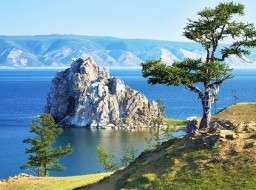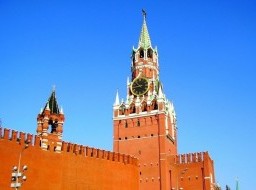Zhaojun Tomb
Zhaojun Tomb, also called Green Mound or Green Grave, is located south of the city of Hohhot in the Inner Mongolia Autonomous Region. It is the tomb of Wang Zhaojun, a commoner who married a Xiongnu chief in order to preserve the nation’s unity, and is mentioned in historical documents and folklore as far back as the Tang dynasty. The tomb of Zhaojun was built in the Western Han period. It has two thousand years of history and is a protected cultural relic. The largest Han tomb in China, it is an earthen mound thirty-three meters high with a base of nearly thirteen thousand square meters. In the summer months the mound is covered with wild flowers and grass which are said to thrive well into the autumn months, hence the nickname the Green Mound. The mound is topped by a pavilion offering spectacular scenery. The site is one of the eight most popular tourist attractions in the Hohhot area. In Chinese history, Zhaojun was a very great lady, devoted to maintaining the peace in our country. She is considered an embodiment of beauty in common people. For thousands of years her legend has been told throughout the region. Since the Tang and Song Dynasties, scholars have expressed their respect for Zhaojun through poems, song lyrics and paintings. A famous historian once said "She now is not only a person who existed in our history but a symbol of peace." Zhaojun Tomb is not only a burial site but an historic monument commemorating peace between the races. Zhaojun Tomb is a shining pearl on north grassland of China and has become a world famous tourist destination. Zhaojun Tomb is situated nine kilometers (approx. 6 miles) away from Hohhot, on the plain extending from the northern bank of the Dahei River. Also called 'green tomb' after the green grass that grows on it, it is listed among the eight most popular scenic spots in Hohhot. The tomb is a large man-made earthen mound, which is 33 meters (approx. 108 feet) high. It was built to commemorate a great woman named Wang Zhaojun, who was one of the four most beautiful ladies in ancient China, and who sacrificed herself for the unity of China by marrying Khan. Recently, the tomb area has been developed to include cultural facilities such as a Reception Room, Exhibition Room and Painting and Calligraphy Room. The tomb has now become one of the key cultural relics under the jurisdiction of Hohhot. The tomb is famous for its spectacular scenery. The summer months are mild, and the wild flowers and grasses grow in abundance, creating a beautiful natural picture together with the towering green trees. When autumn comes in September, unlike grasses which shriveled and yellow at this time of the year, the grass growing on the tomb is still green and vigorous. |





